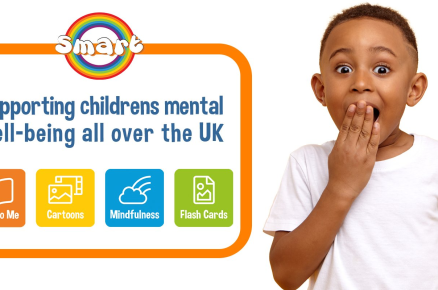Electronic cigarettes, also known as “vapes” or “e-cigarettes,” are battery-powered gadgets that heat liquids that contain nicotine or other drugs to make vapour. The act of breathing in the smoke that an e-cigarette makes is called “vaping.” E-cigarette use is growing, especially among young people. In this blog, we will talk about the health impacts of vaping on school community.
Now-a-days Health Impacts of Vaping is a important topic. In the past, students had a hard time. If they wanted to smoke cigarettes, they had to sneak off campus. People could smoke at school, but the smell of smoke would let everyone know.
Young people can vape in school these days, and their teachers might not even notice. This not only makes young people more likely to use e-cigarettes, but it also puts all students’ health and safety at risk.
What makes vaping so attractive to students?
E-cigarettes, which stand for “electronic cigarettes,” are small, hand-held devices that turn a nicotine liquid into a vapour that can be inhaled. They come in many sizes and types, but most are about the size of a USB drive.
Some e-cigarettes look like regular cigarettes, cigars, or pipes. And some look like everyday things, like pens or USB memory sticks. Some of them are made to look like everyday things, like critical fobs or highlighters.
Vapping use can make you do worse in school.
People who vape at school do more than just trouble other kids. It can also cause poor results and performance in school.
E-cigarette users missed more classes and assignments and had lower GPAs than students who didn’t use tobacco products, according to a study from 2021.
A teacher talked about how e-cigarette addiction has affected her students: “A kid showing symptoms of (nicotine) addiction has mood swings, sudden drops in grades, or losing or changing friend groups.”
Vaping by young people is dangerous to public health and safety.
It’s hard to deal with vape incidents because policies don’t always catch them, and there aren’t enough extra support systems. This is why more and more young people are starting to vape. Let’s look at how vaping affects health and safety at school:
1. Teenagers who smoke cigarettes can hurt their brain growth.
When kids are in middle school and high school, their brains undergo essential changes. Nicotine stops neurons from growing and hurts the parts of the brain responsible for learning, memory, and focus.
The brain continues to grow and change until about age 25, so the more tobacco young adults are exposed to now, the higher the risk of problems in the future.
2. Using the health impact of vaping on lungs.
Chemicals like lead, volatile organic compounds, and agents that cause cancer are some of the things that can be dangerous in e-cigarettes. The UK Lung Association says that these hazardous chemicals have worsened the effects on the lung health of young people. When teens vape every day, this damage to their lungs can last for a long time and lead to lung cancer, bronchitis, and other dangerous lung diseases-health impacts of vaping on lungs.
3. Teenagers who vape become addicted very quickly.
Not only does the nicotine in vape juice contain chemicals that are bad for your health, but it is also very addicting. Teens and young people who vape are more likely to become addicted to nicotine than those who don’t vape. Nicotine quickly gets into the system when people smoke and makes its way to the brain.
This raises the amount of the chemical dopamine in the brain, which makes you feel good. To keep dopamine levels high, the body then starts to want more tobacco, which can lead to nicotine addiction.
4. Younger people use it when it’s widely used- Health impacts of vaping
The age of people who use e-cigarettes for the first time keeps going down as more young people start using them. E-cigarettes are being tried by middle school kids younger and younger. The number of middle school kids using e-cigarettes is only going up, according to the CDC.
Adopting a child too soon is like a chain reaction for young kids. There only needs to be one kid whose brother or sister vapes for people to become interested. And because smoking is so addicting, it can quickly become a huge problem.
5. E-cigarette vaping is dangerous and unhealthy for other kids.
Kids who vape at school put more than just their health and safety at risk. Students who have asthma or other breathing problems are more likely to be affected by e-cigarette aerosol than other people.
People who don’t smoke or vape themselves may be more affected by secondhand e-cigarette aerosol fumes because they aren’t used to breathing in the chemicals.
When teens vaping affects other students and school staff, it’s not just a problem for one person; it’s a substantial public health and safety issue.
if you more concern about your children you must read Mental health issues in children are on the rise in the UK.
what can schools do to stop the vaping?
Stopping people from bad health impacts of vaping in schools is a big topic of talk all over the country. Seventeen million teenagers vape every day. To prevent this, schools should do seven things:
Make a vaping set that works: To fix the problem, the school needs to implement a clear and straightforward vape-free policy. As part of the policy, the school should punish students who break the rules and teach them about the dangers of smoking.
Increase enforcement and monitoring: Schools need to increase tracking for vape-related incidents across the school to ensure the rule is followed. This could mean more random searches of lockers and backpacks and more check-ins during lunch or after school. It should also have security cameras and vape monitors in the bathrooms and other public places.
Teach school staff: If you teach staff about the dangers of vaping and how to spot events caused by it, they can play a big part in stopping it. Every person in charge of a school should know how to spot smoking so they can take action when needed.
Communicate to parents: Parents need to involve themselves in the conversation about vaping among teens, both at home and at school.. To start a conversation, schools can hold workshops for parents or send educational flyers to family members.
Teach your students: A lot of young people don’t know how bad it is to vape nicotine. The students need to know the risks of smoking and the school’s rules against it. This kind of teaching should begin early in middle school to keep kids from ever starting to vape.
Now we know the bad health impacts of vaping on school community. It’s our responsibility to protect our children from this bad habbit.
Read our The Crucial Importance of Mental Health During University Studies.







1 Comment